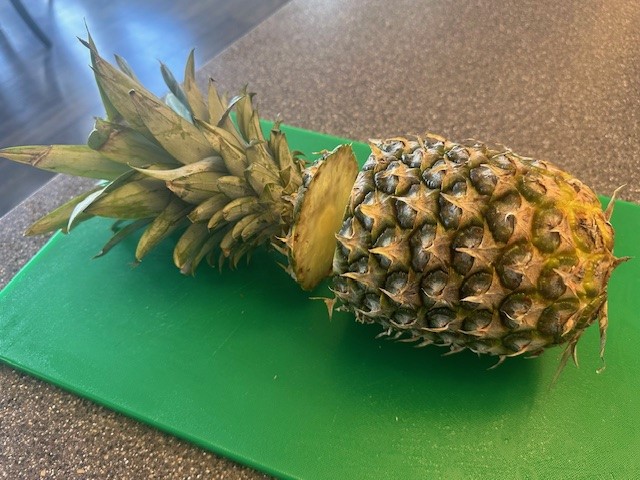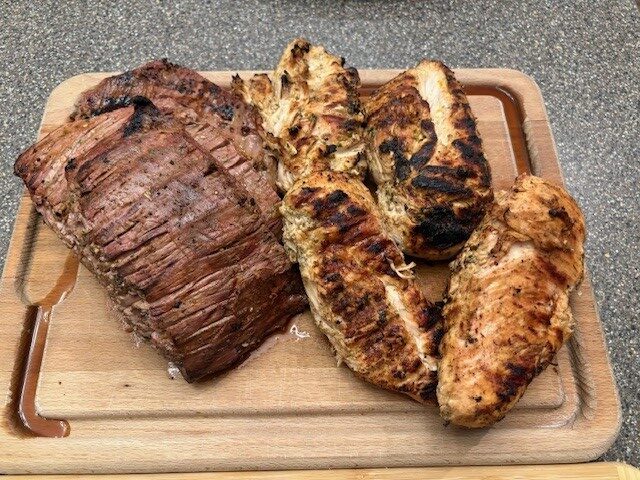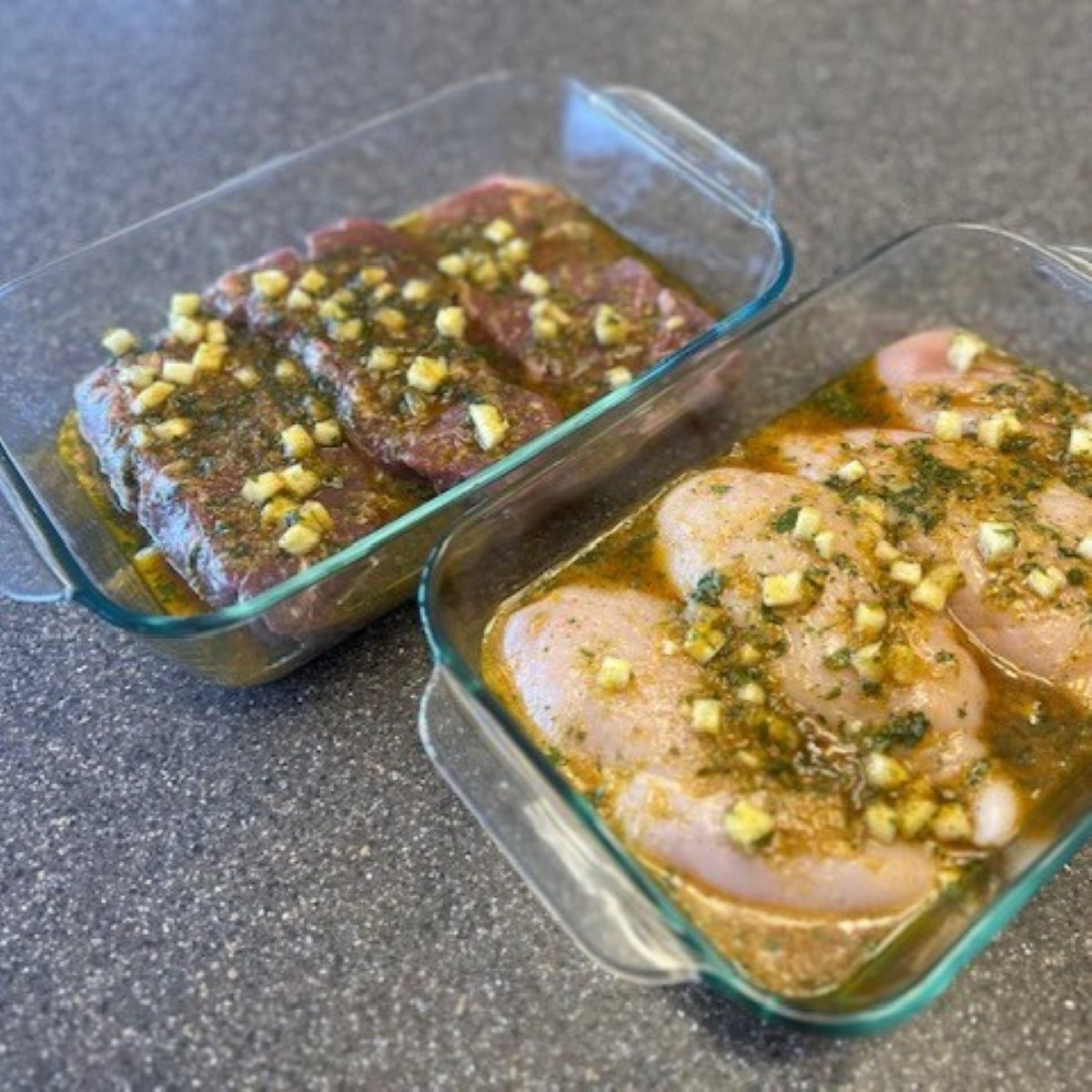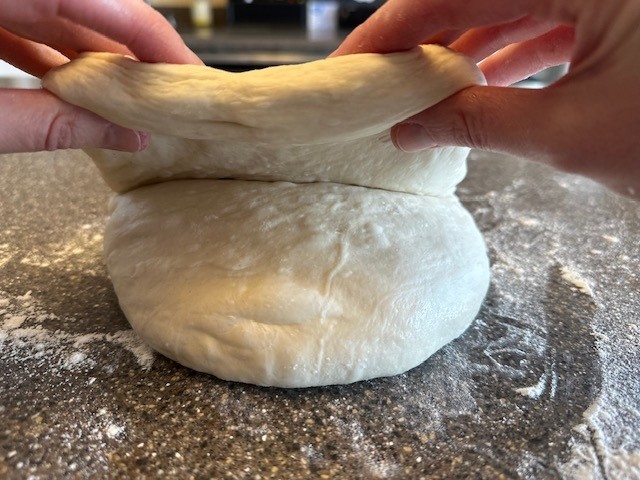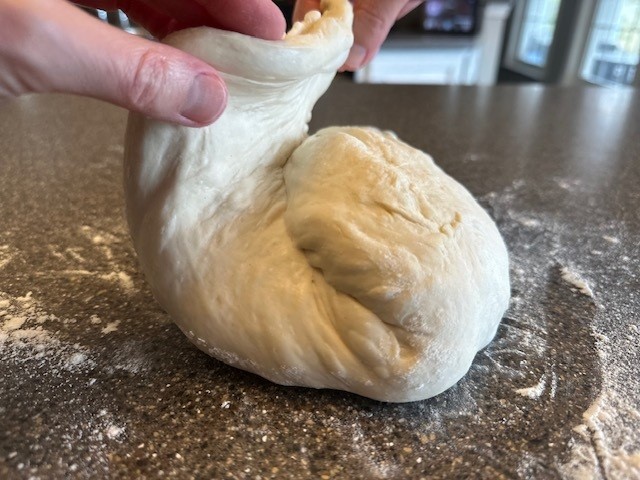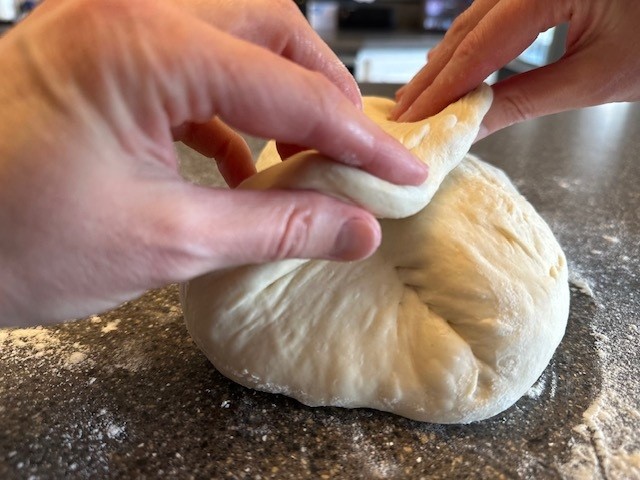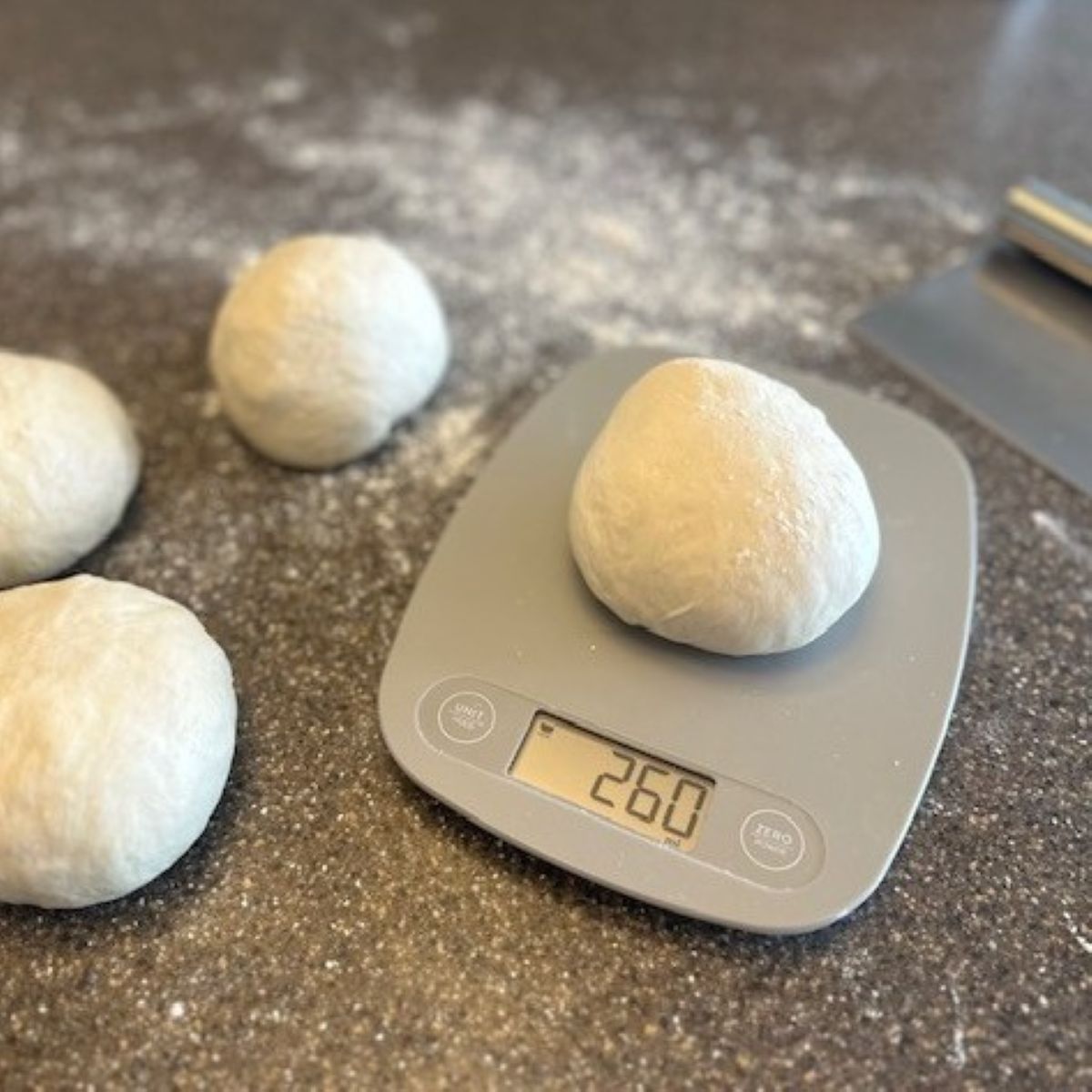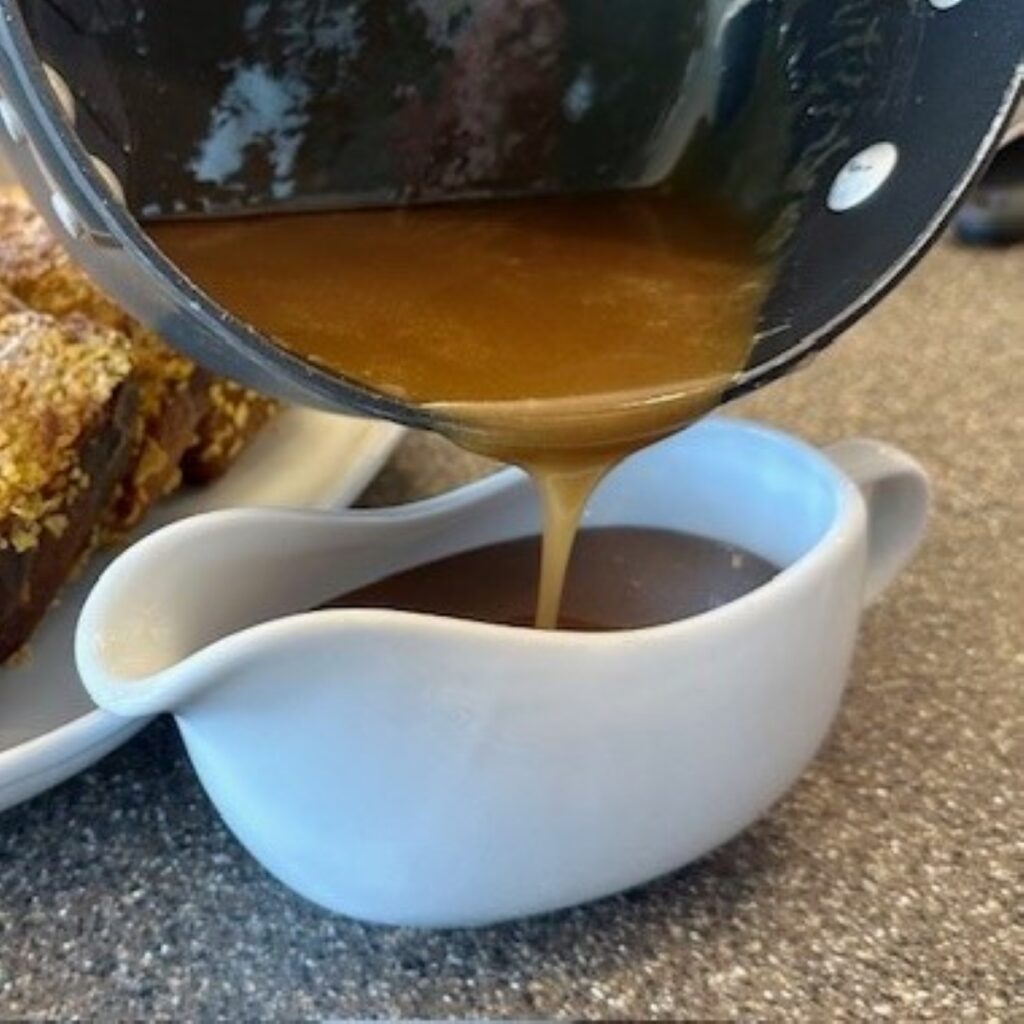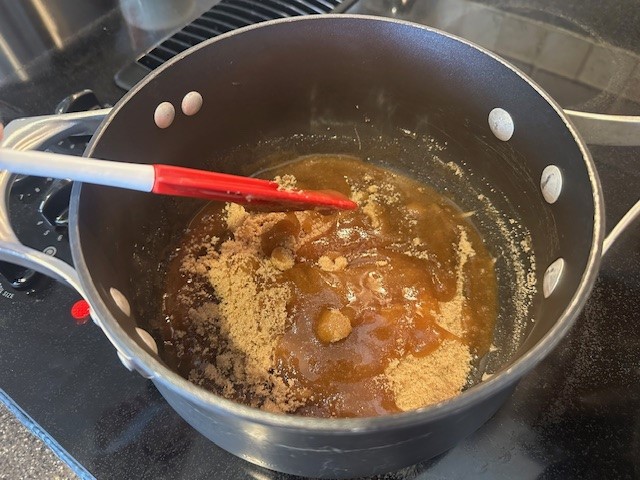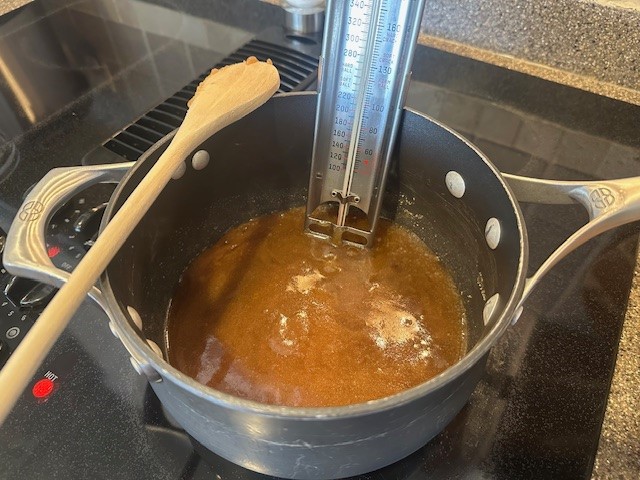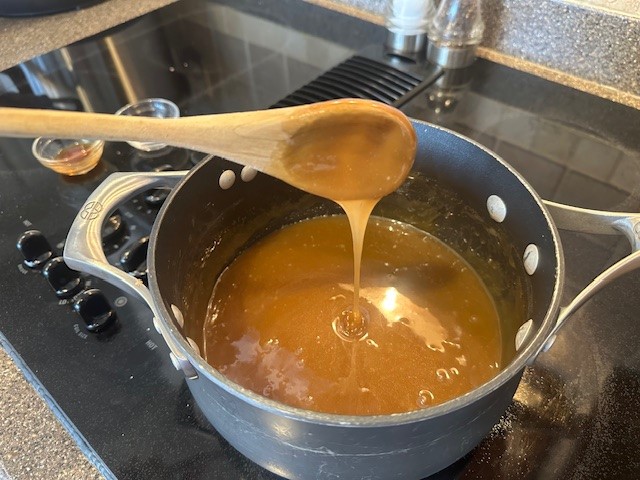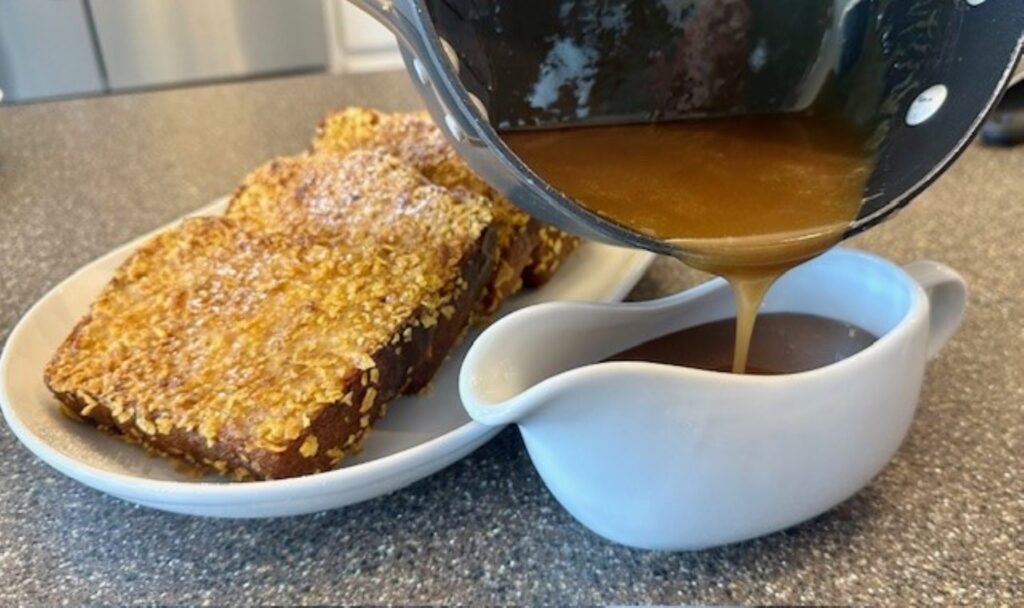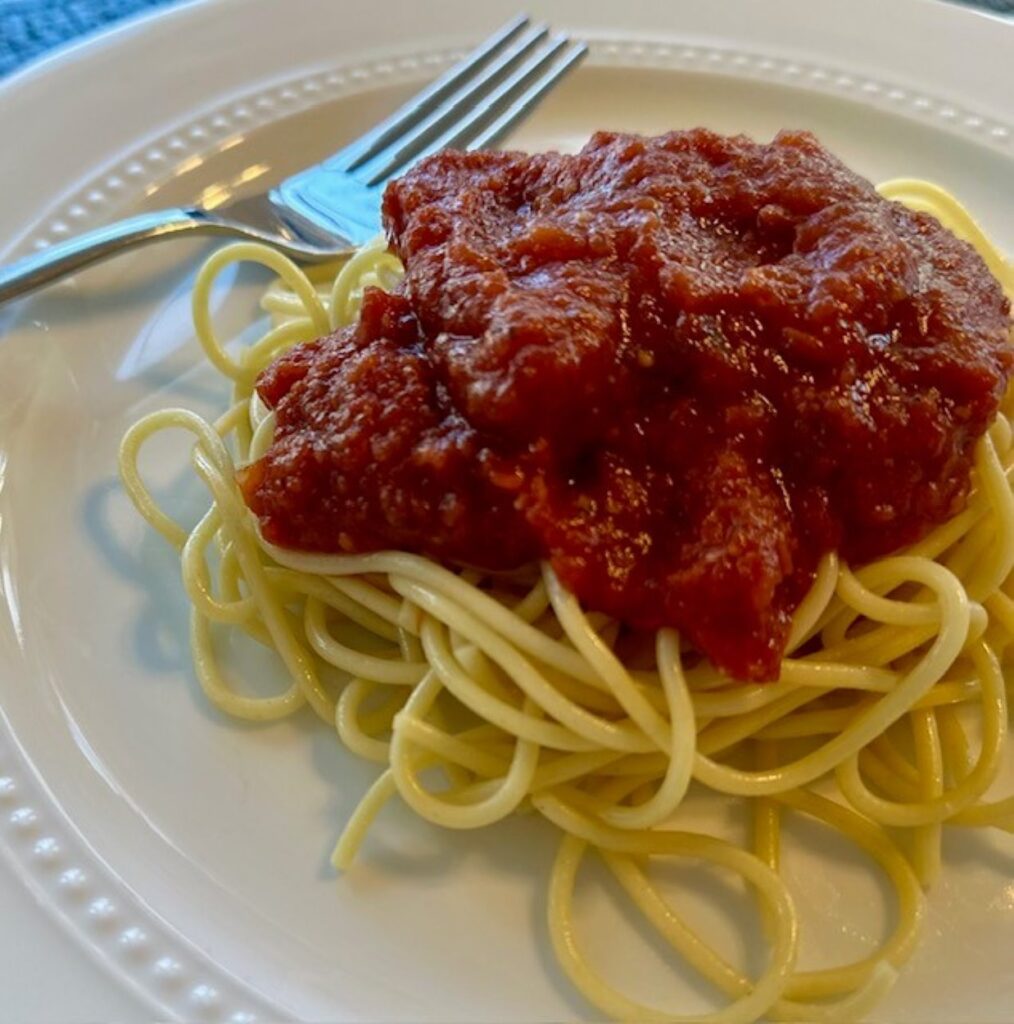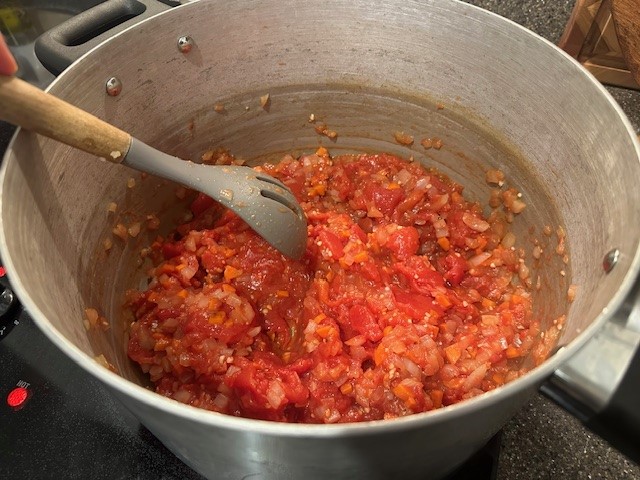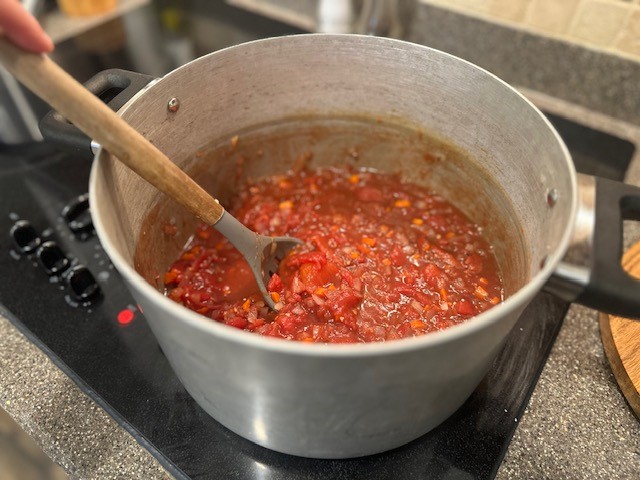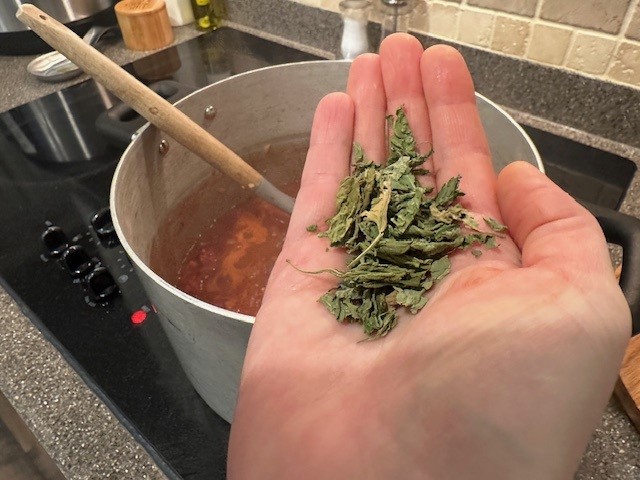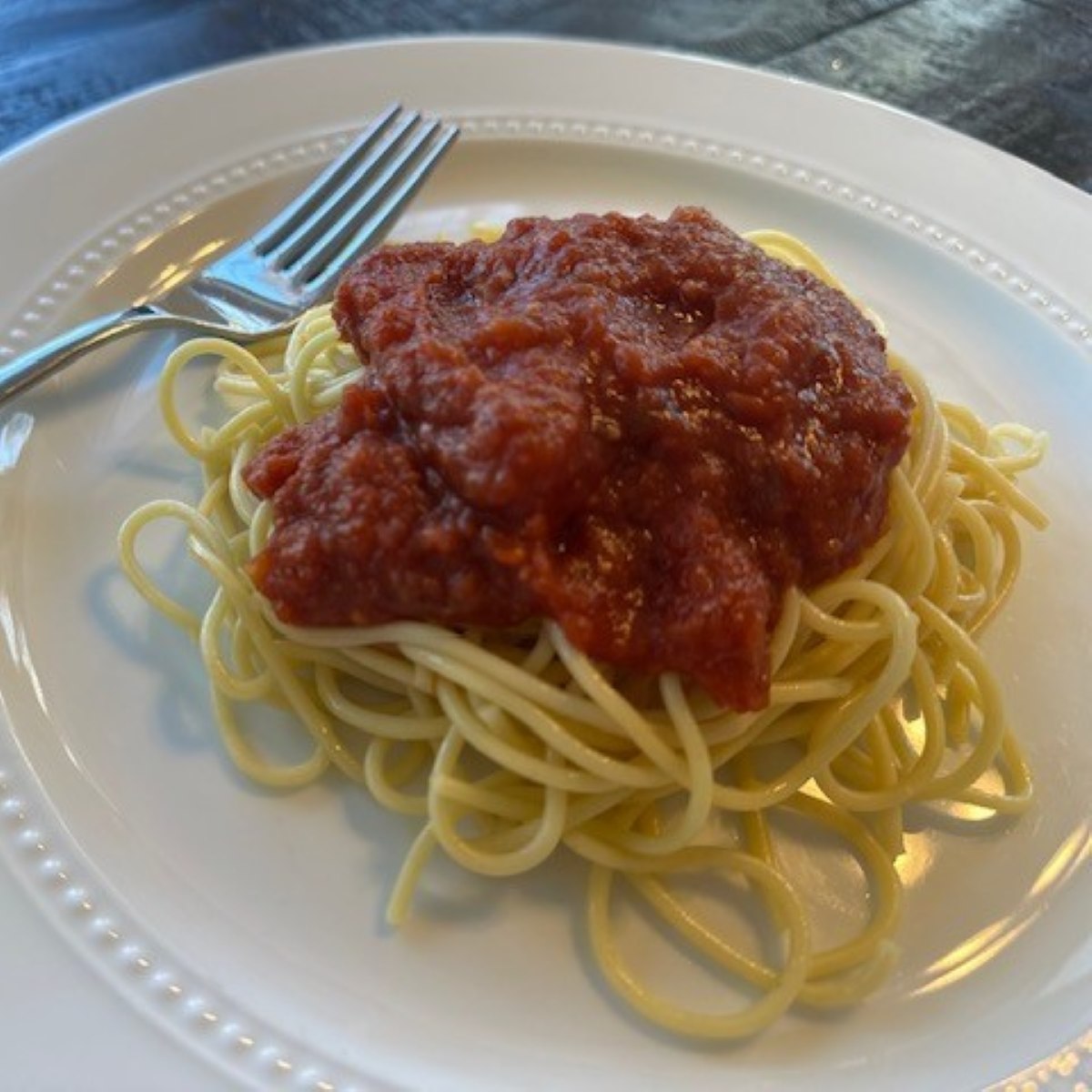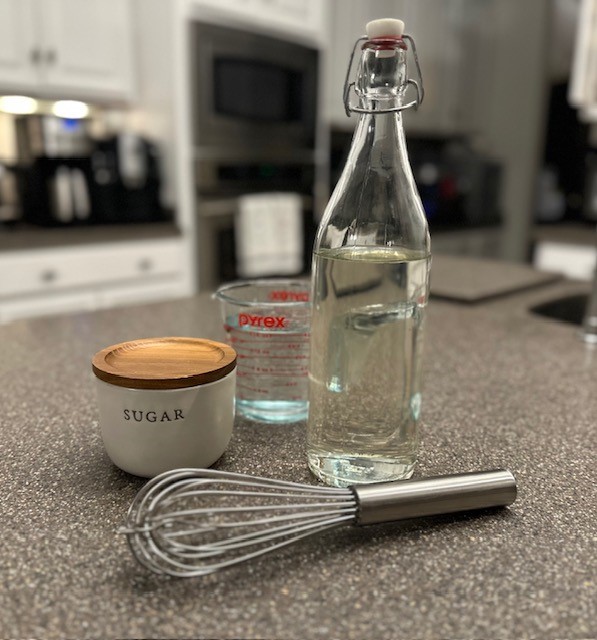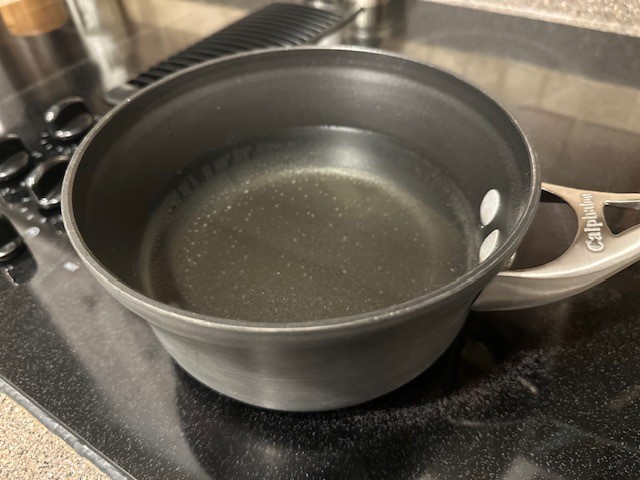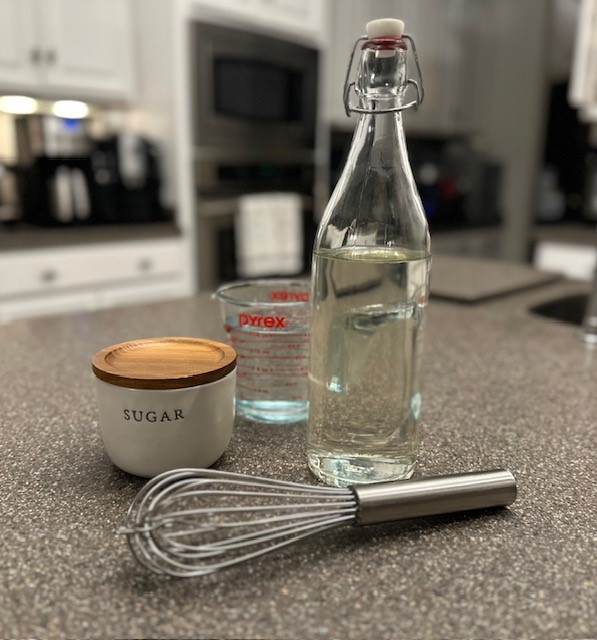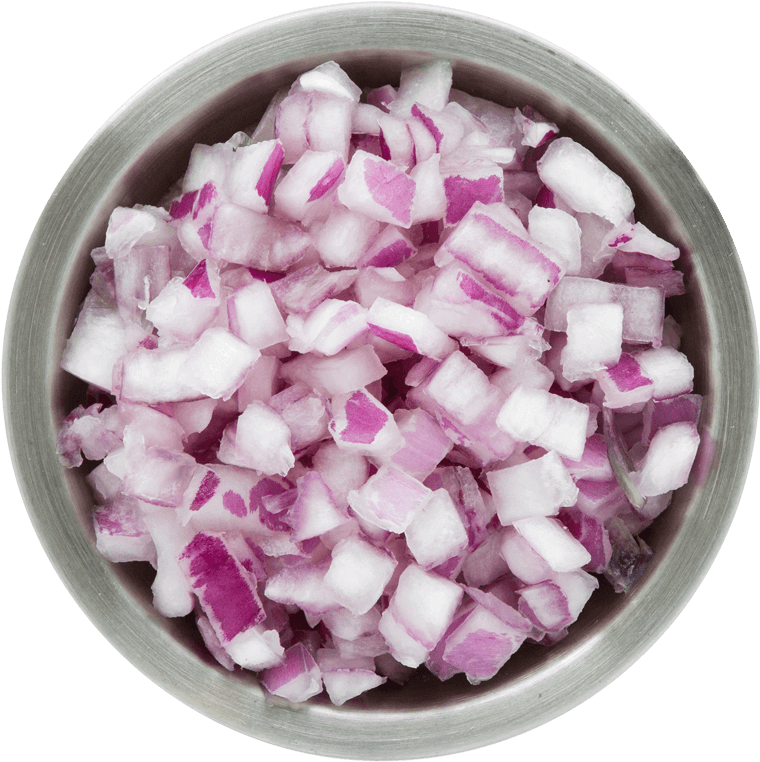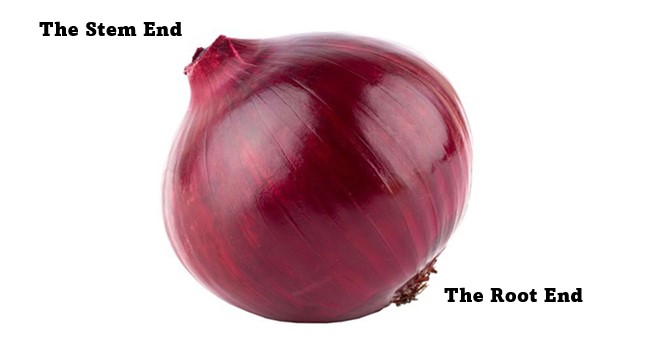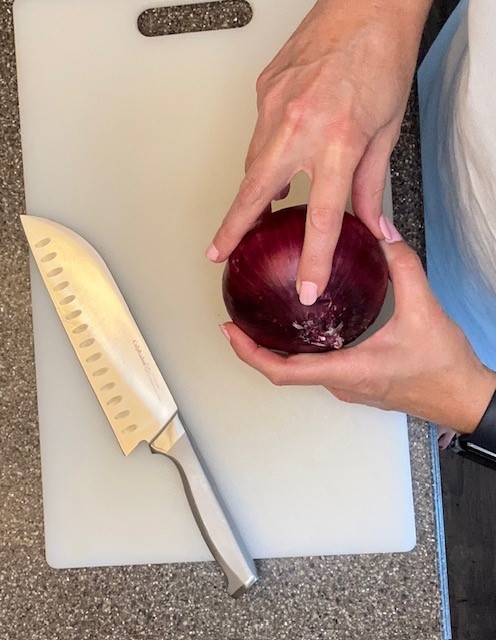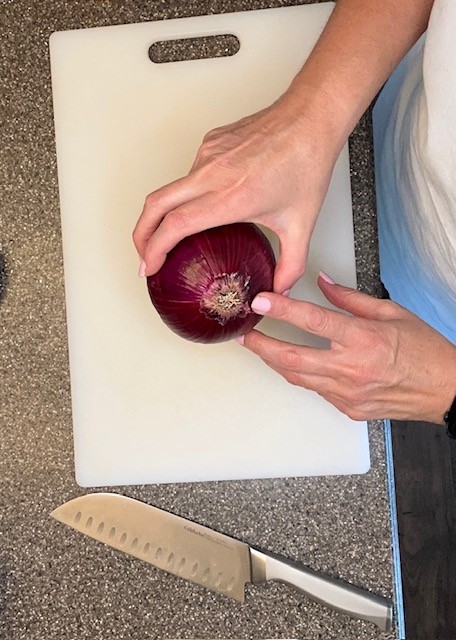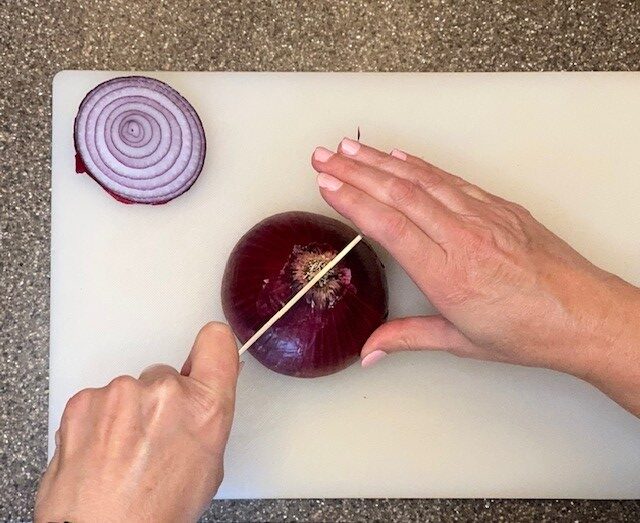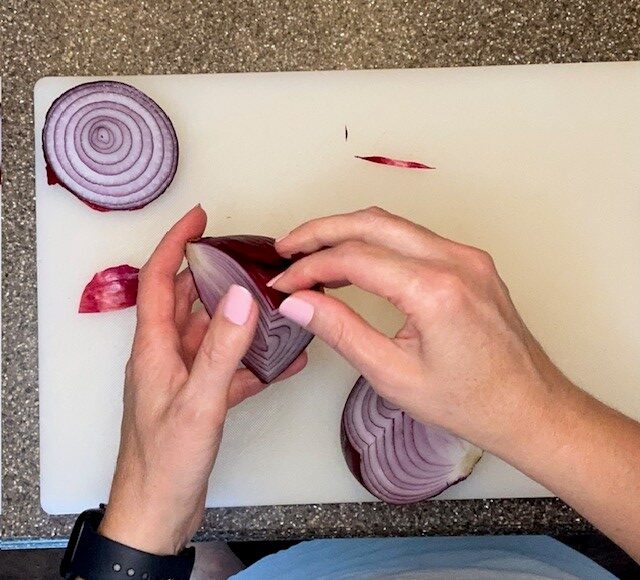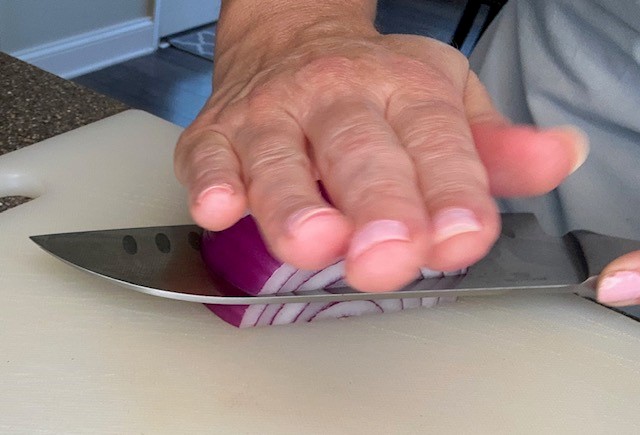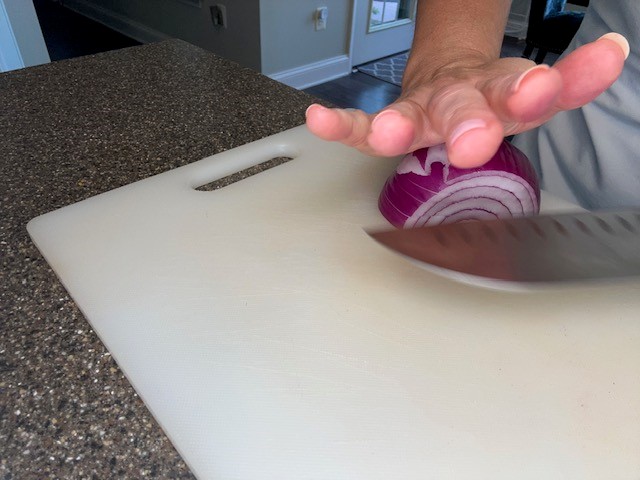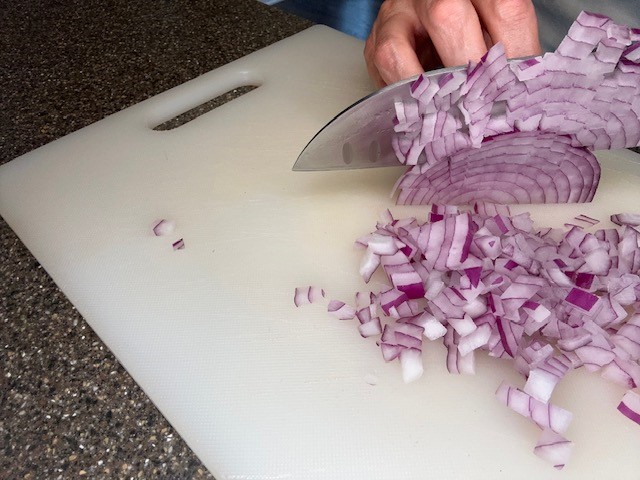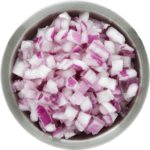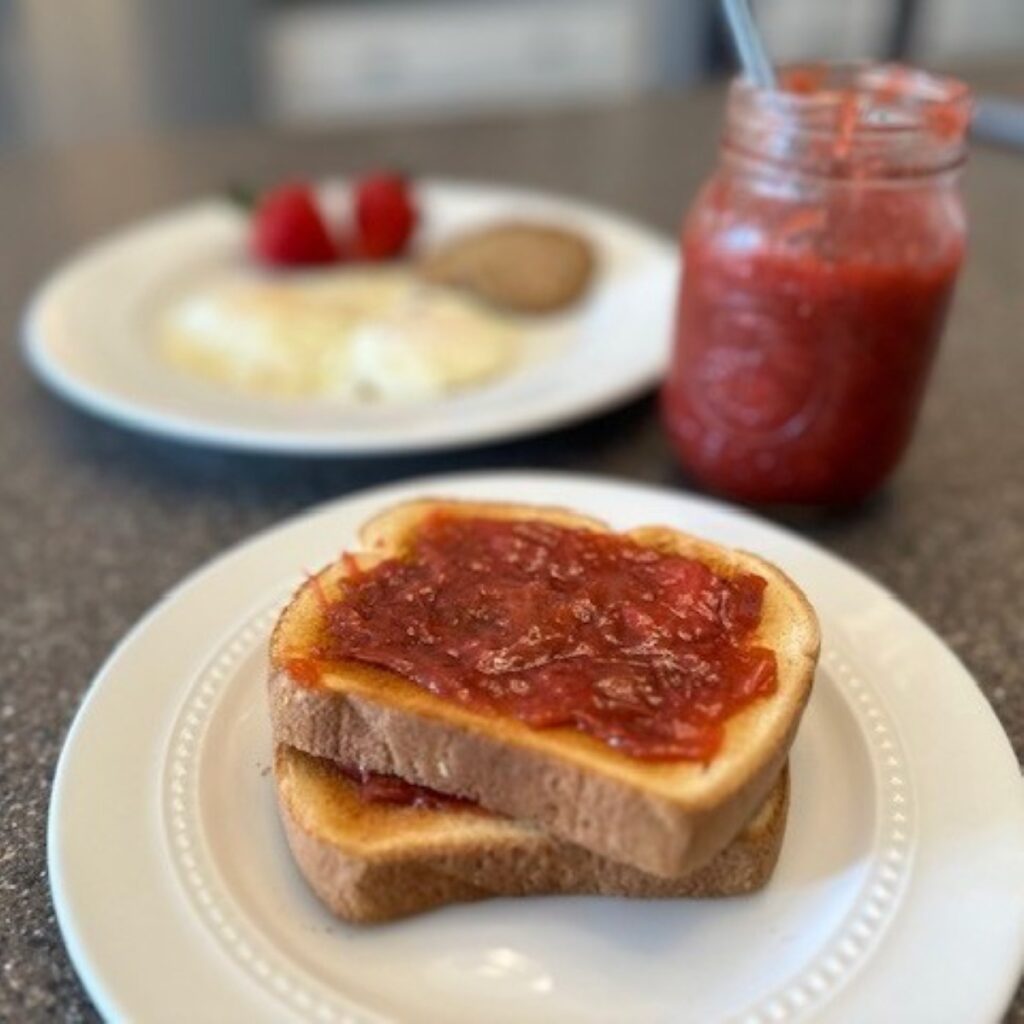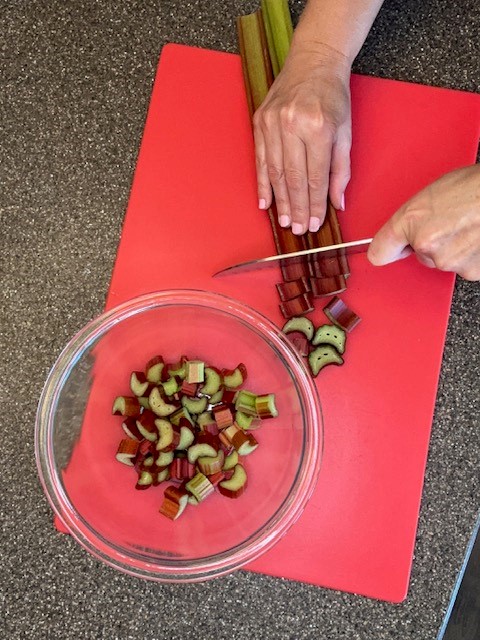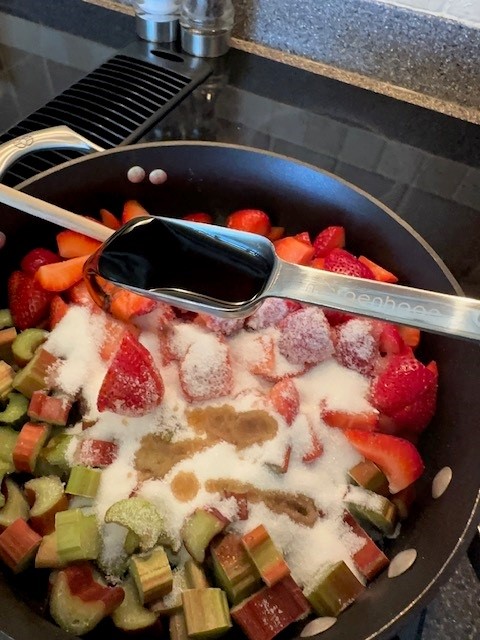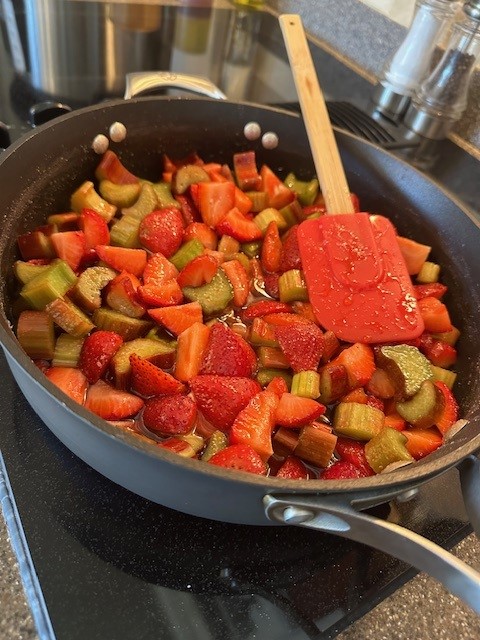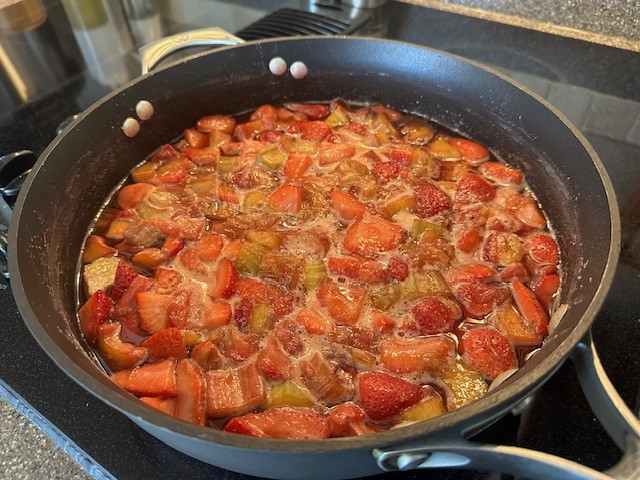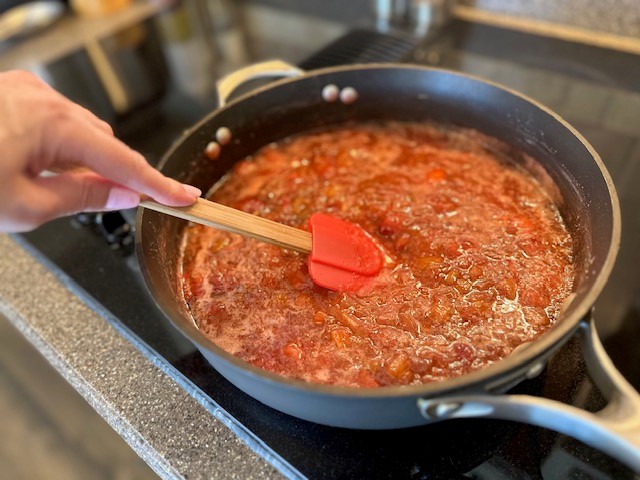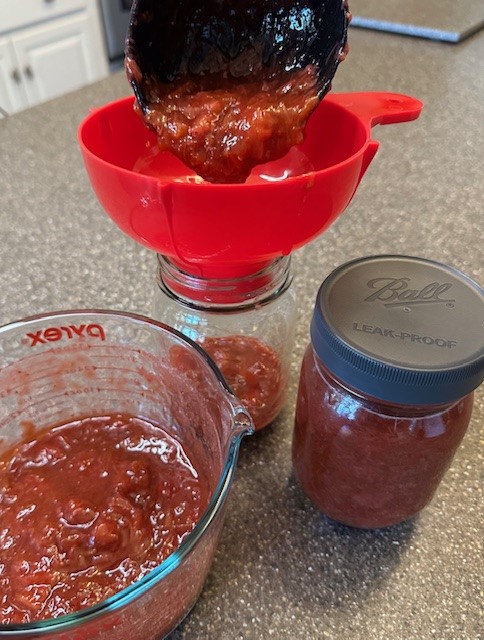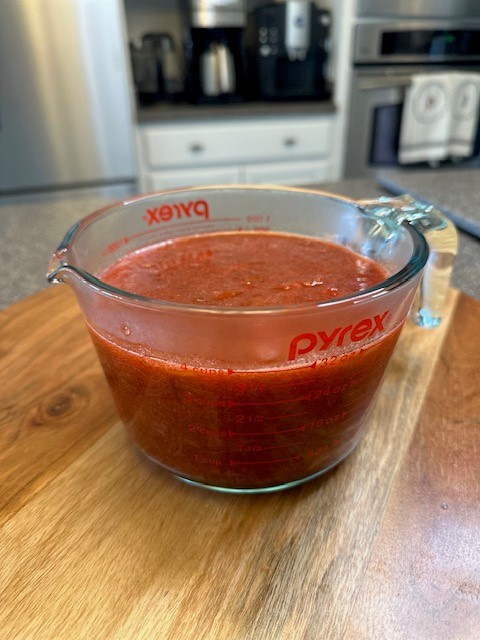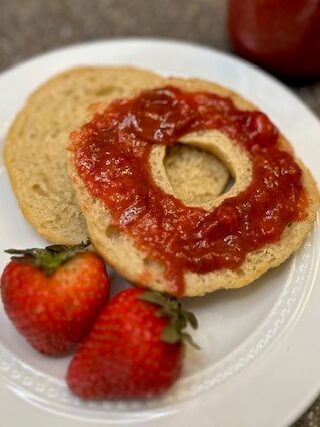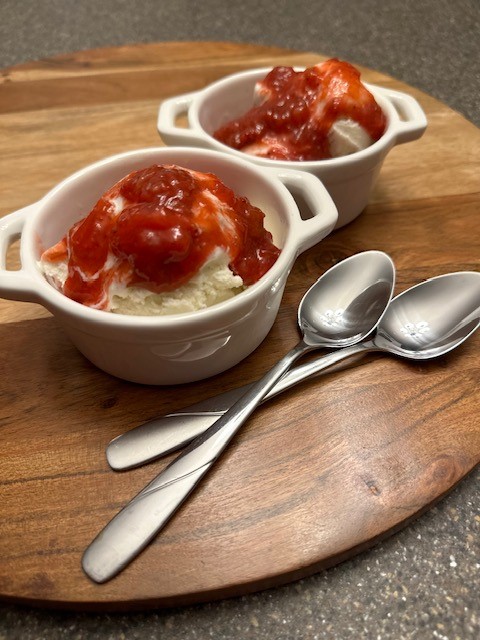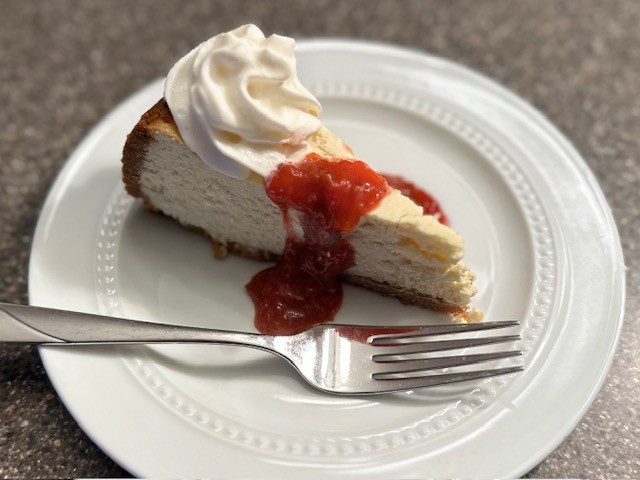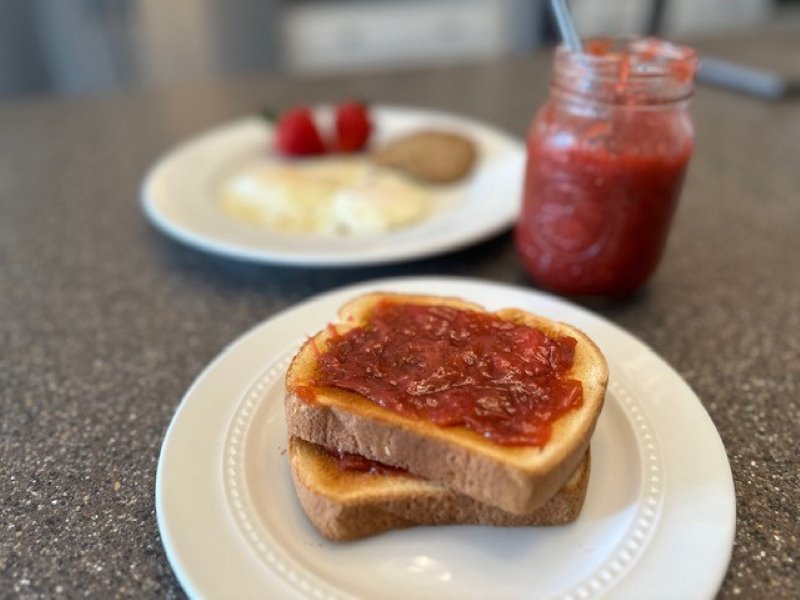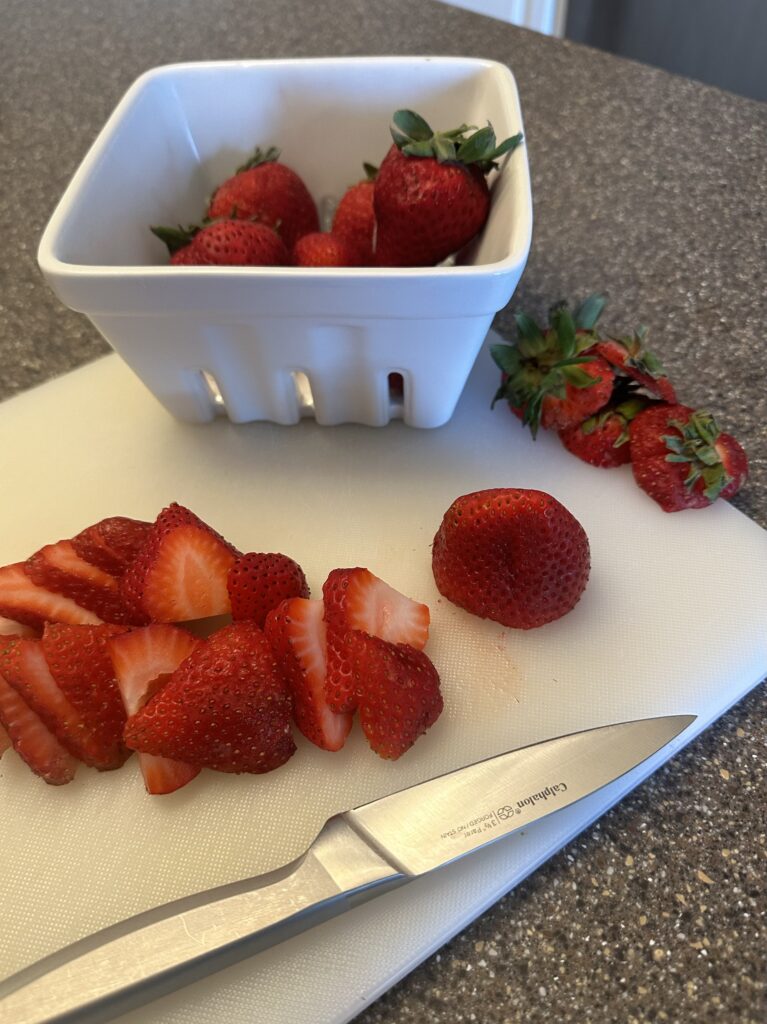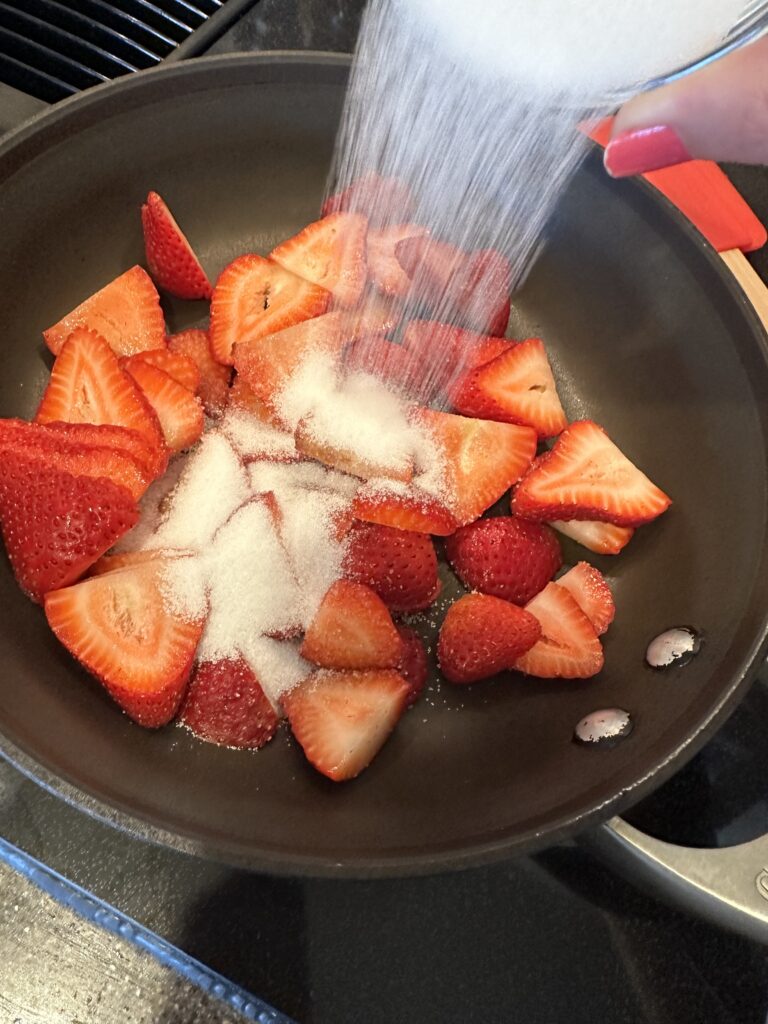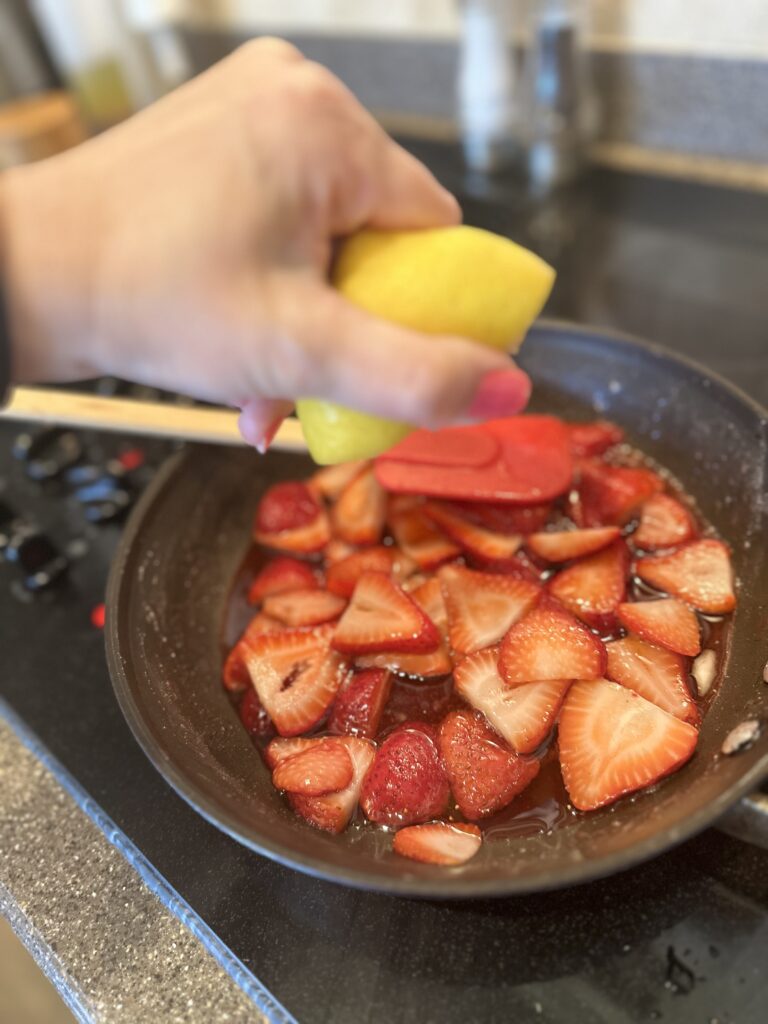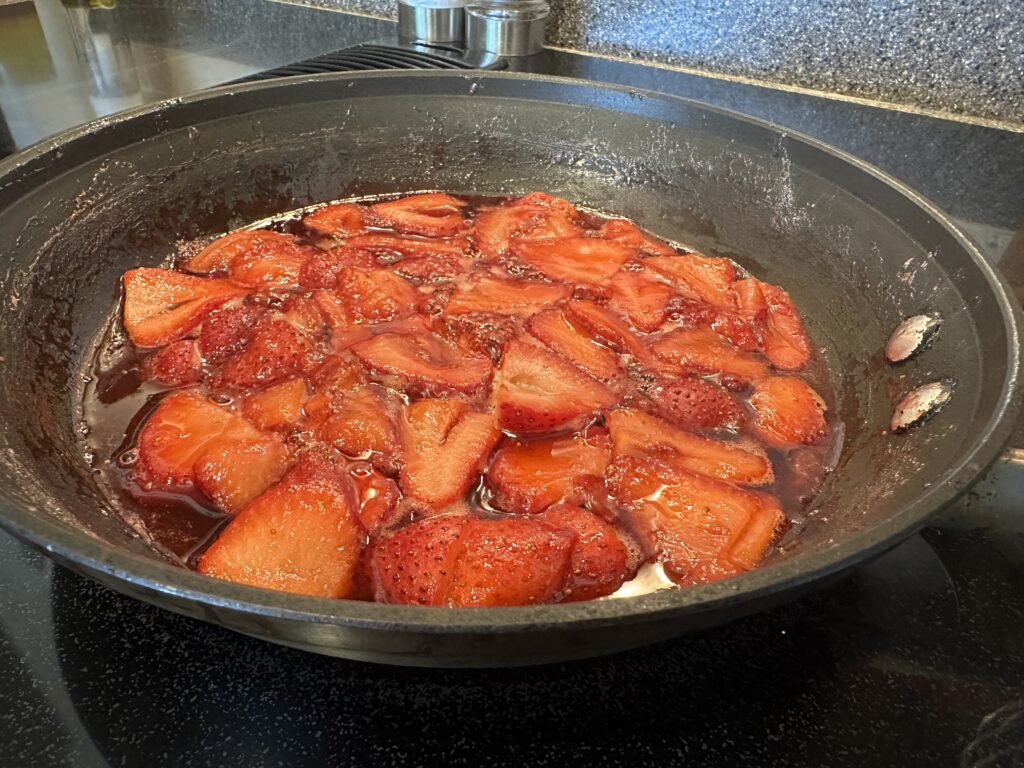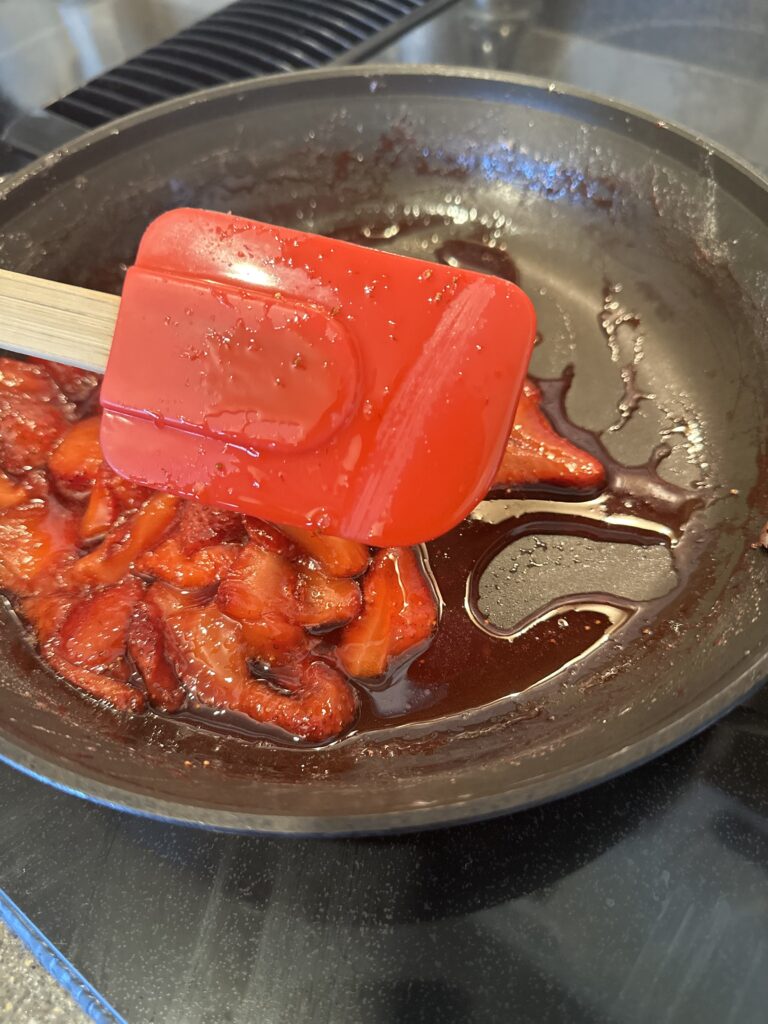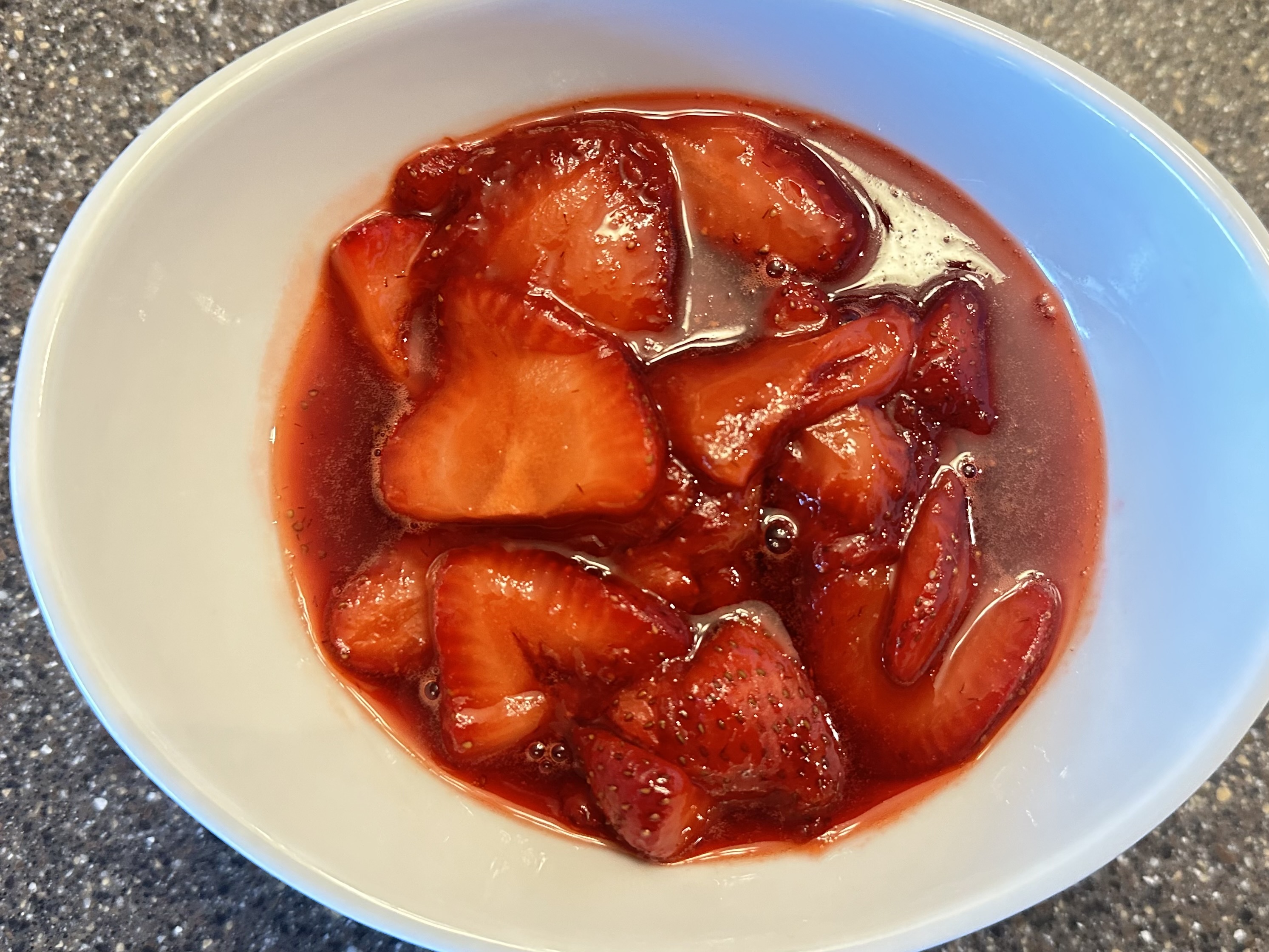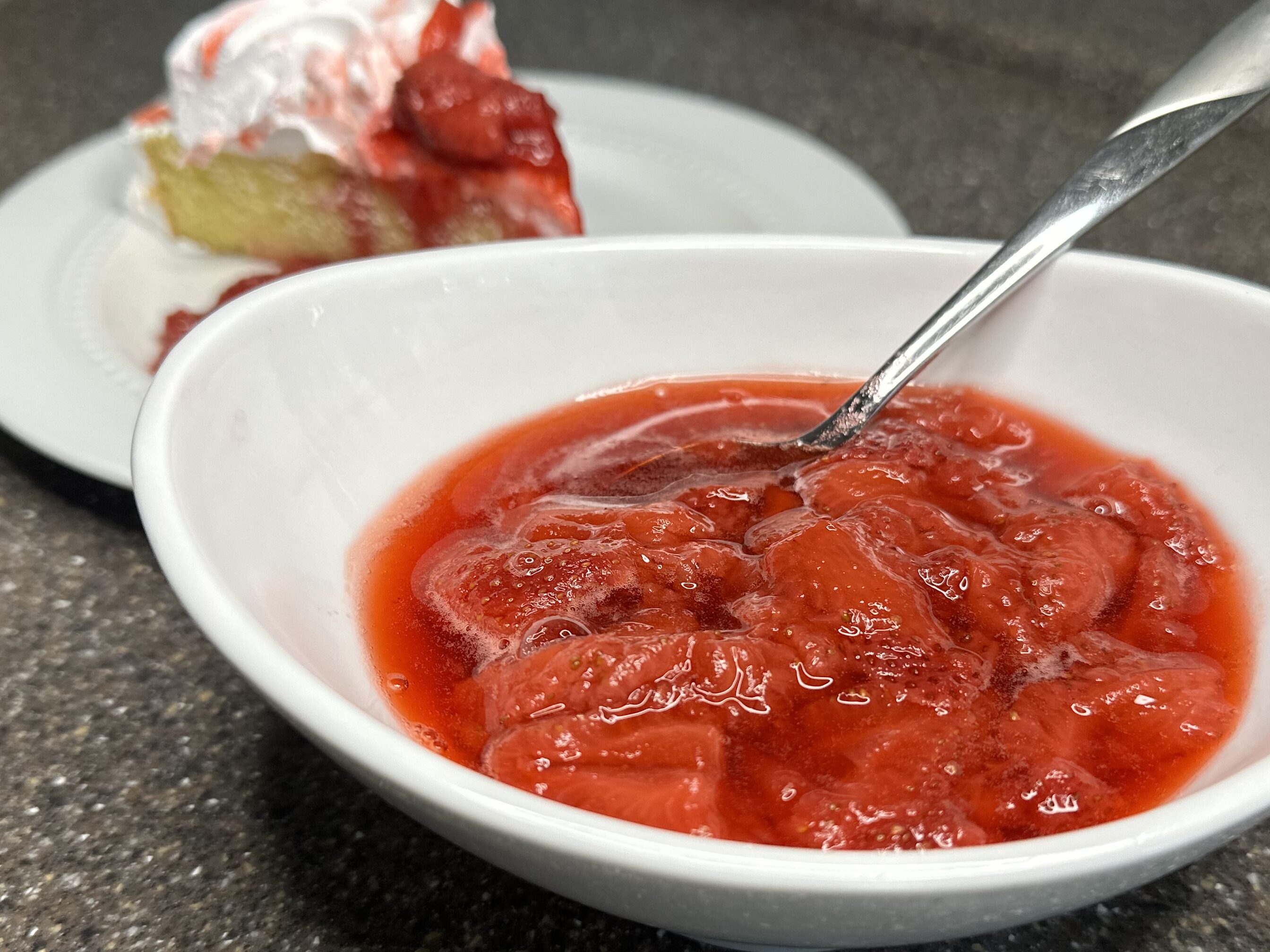Another fabulous recipe from my days at L'Academie! Unlike fruit pies dough, which are made with sugar, egg and vanilla, Pat Brisee is a simple, light and flaky, 'not sweet' dough that's perfect for making quiche or other savory pies and tarts. If rolled thin, it will be tender and delicate, incredibly delicious, and perfect every time, and comes together with only 4 simple ingredients that you probably already have on hand. If you don't have a food processor, no problem- you can easily prepare this dough using just your hands, but a rolling pin is essential to making a crust!
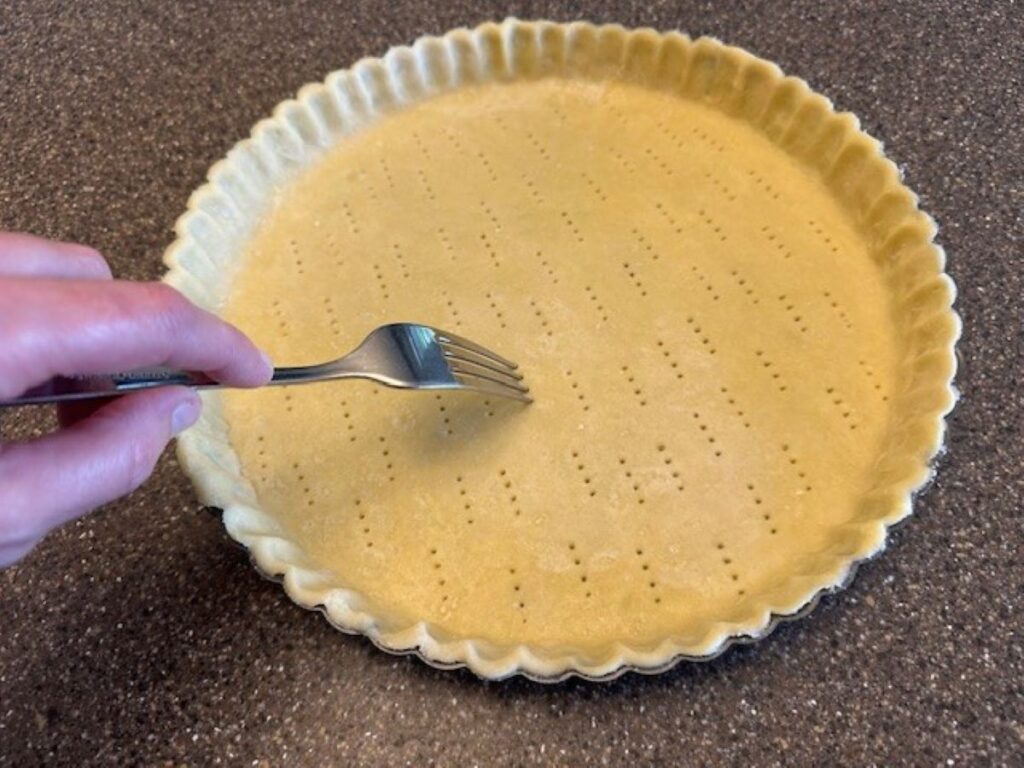
Ingredients:
- 8 oz. All Purpose Flour about 1-¾ C, measured by the spoon and sweet method
- 5 oz. Cold, Unsalted Butter, cut into Cubes, 10 Tablespoons
- 1 tsp. Kosher Salt
- 7-8 T. Ice Cold Water
Instructions:
Step 1: Gather your ingredients, along with a food processor, and have a piece of parchment paper available. Stir the salt into the flour.

Step 2: Gently toss the butter into the flour to coat each piece.

If preparing the dough by hand, use clean hands, work directly in the bowl, massaging the butter with your fingers until you have pea-sized pieces. Drizzle in the water a few tablespoons at a time, working the mixture into a cohesive dough.
Alternatively, if you have a pastry blender, you can cut the butter into the flour and work the ice water in until the dough comes together.
Step 3: If using the food processor, add the flour and butter mixture into the bowl, drizzle in the ice water, starting with only 6 or 7 Tablespoons.

Step 4: Pulse the mixture just until the dough comes together. It should look shaggy, and a little crumbly, but will hold its shape if pressed together. If the dough has absorbed all of the water and appears too dry, add in another tablespoon of the ice water, process again, and add the remaining tablespoon of water, only if needed. You do not want a wet dough.

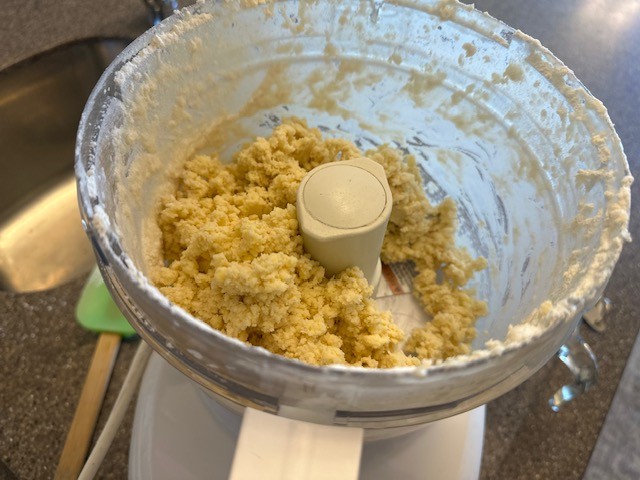
Step 5: Regardless of your method, move the ball of dough onto a clean work surface and press into a round, disc shape. Place the disc onto the parchment paper, wrap tightly in plastic wrap, and stick in your refrigerator to rest for an hour.
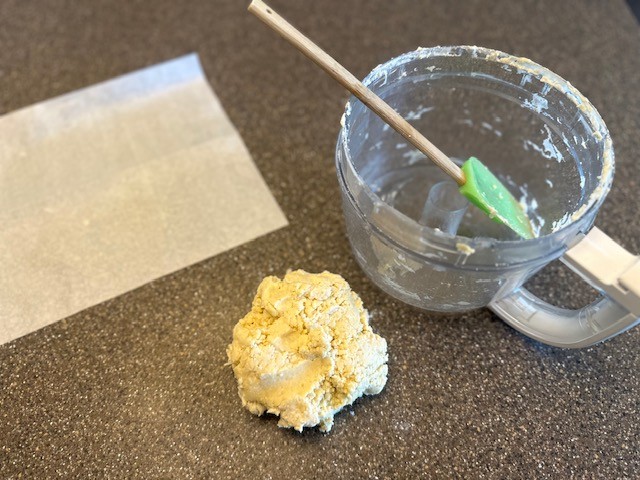
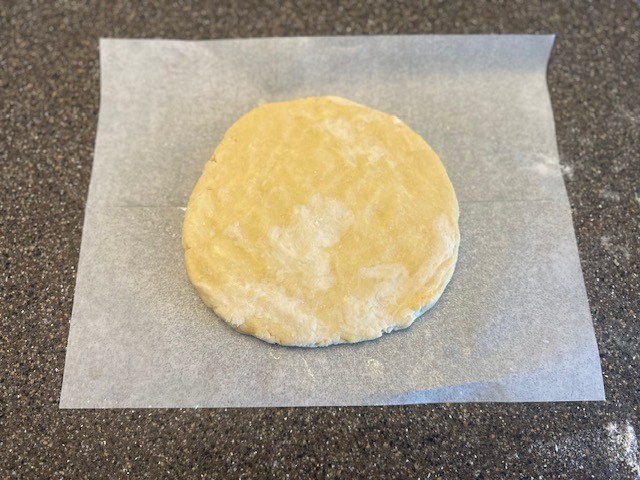
Step 6: After allowing your dough to rest and the butter in the dough to firm, place the disc onto your clean work surface, lightly dusted with flour.
You'll want to go ahead and preheat your oven to 350°F while you prepare your pie crust shell.
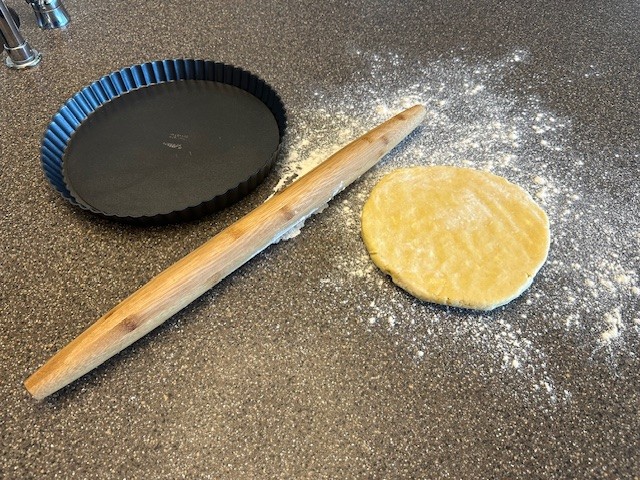
Using a rolling pin, gently begin tapping down on the dough to loosen it up. This helps to ensure that your dough doesn't crack or break apart. Rotate the dough, and repeat.

Step 7: Roll out the dough as thinly as you can, occasionally lightly dusting the surface of the dough with flour and rotating it so it doesn't stick to your work surface.

Step 8: Once the dough has been rolled to a round larger than your tart pan, ensuring that there is enough to line the bottom and up the sides...

Carefully fold the dough in half, and place over the tart pan. Press down gently to ensure that the dough is securely tucked into every crevice.
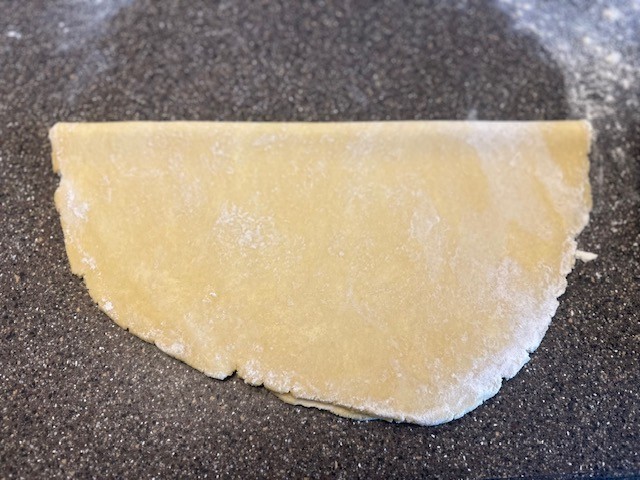
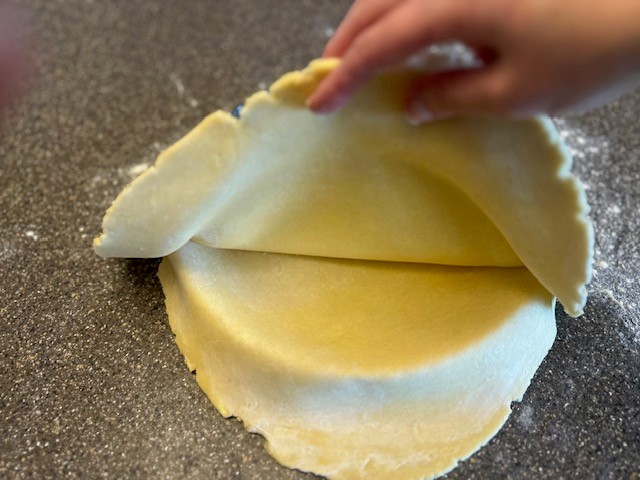
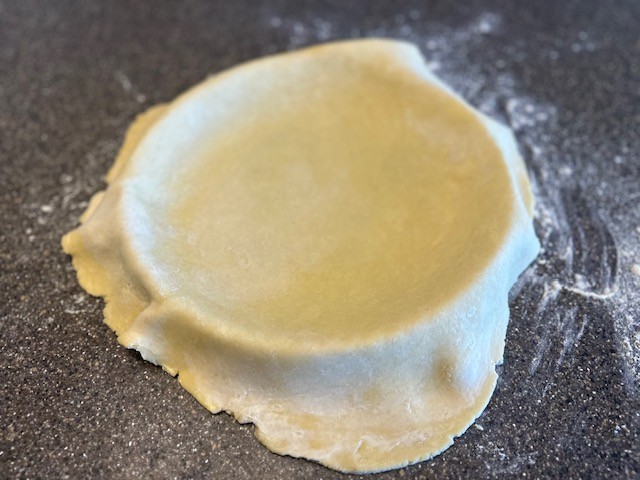
Step 9: Using your hands or the rolling pin pressed over the rim of the pan, trim the edges. Use your fingers to lightly press into the crimped sides. The dough will shrink slightly as it bakes, so be sure that the edges are just slightly higher than the rim.
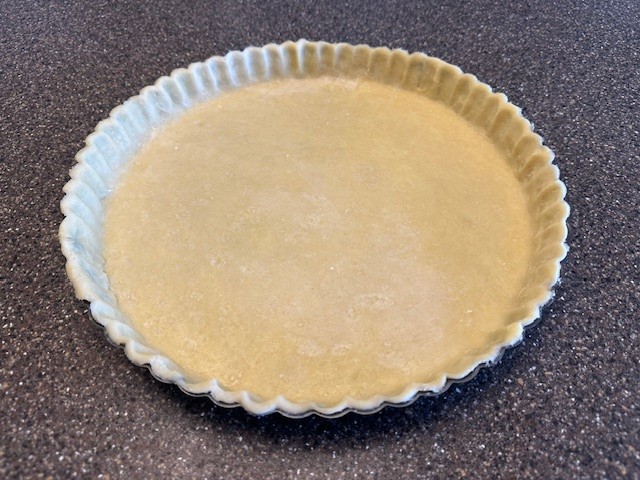
Step 10: Use a fork to pierce small holes over the entire bottom of your pie crust shell. This step will help keep the dough from puffing up, as well as making sure that air gets beneath the bottom layer, ensuring an even bake.
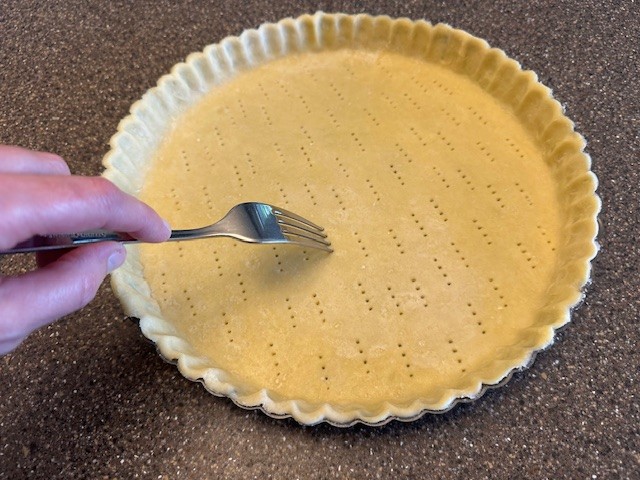
Step 11: Line your shell with parchment paper, and fill the center with baking weights, if using. You can also use any dry beans. Alternatively, if neither of these are an option, you can press a sheet of aluminum foil down over the parchment, just be sure to press lightly into the sides of the tart pan.
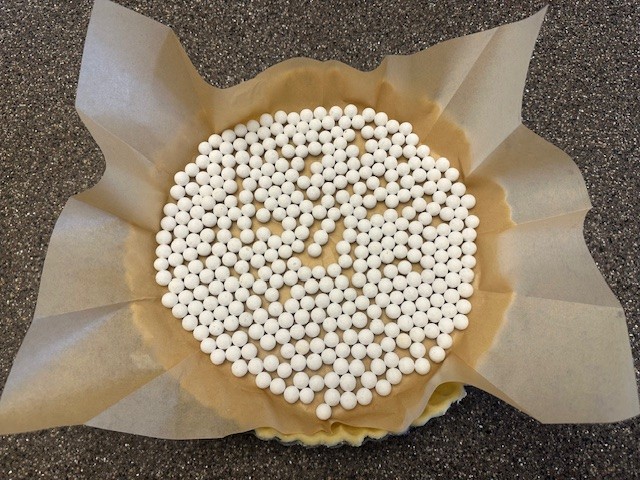
Step 12: "Blind Bake" your pie crust shell in the preheated oven for about 5 minutes. Remove the parchment with the filling, return the pan to the oven for another 10 minutes, just until the crust is a pale golden brown.
You're now ready to fill and bake!
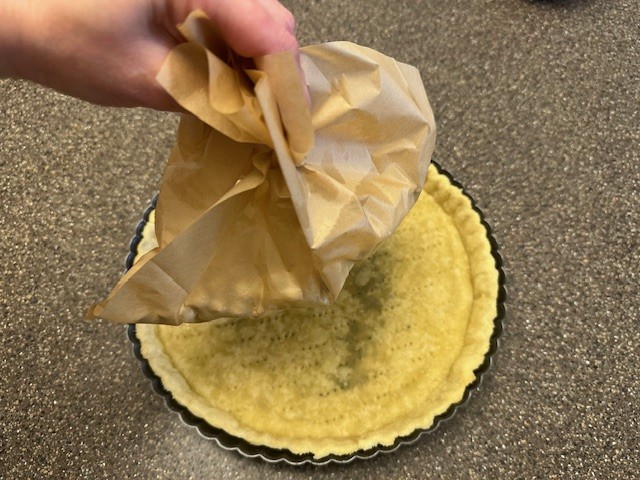
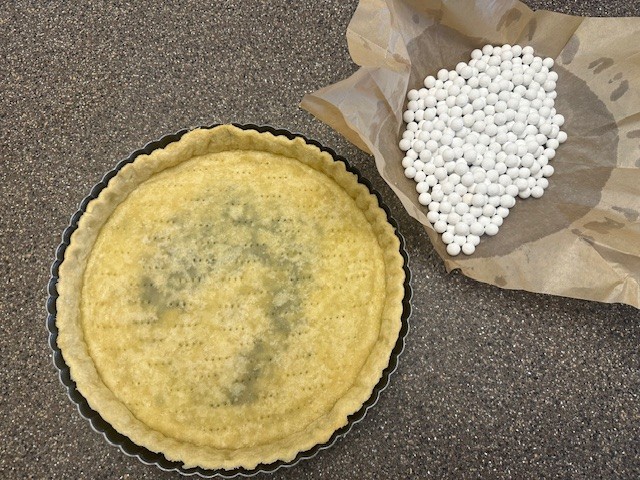
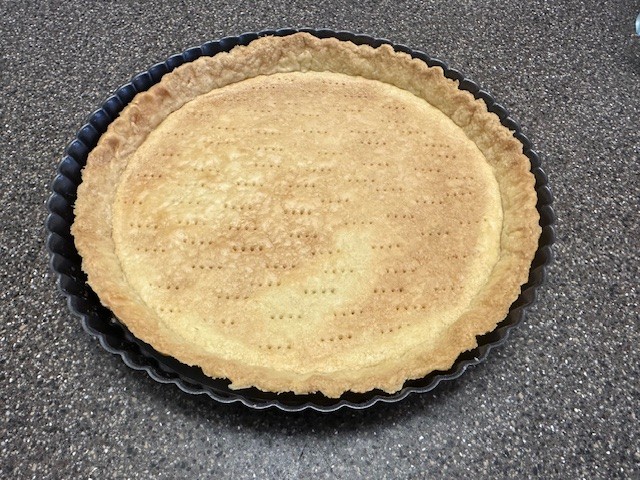
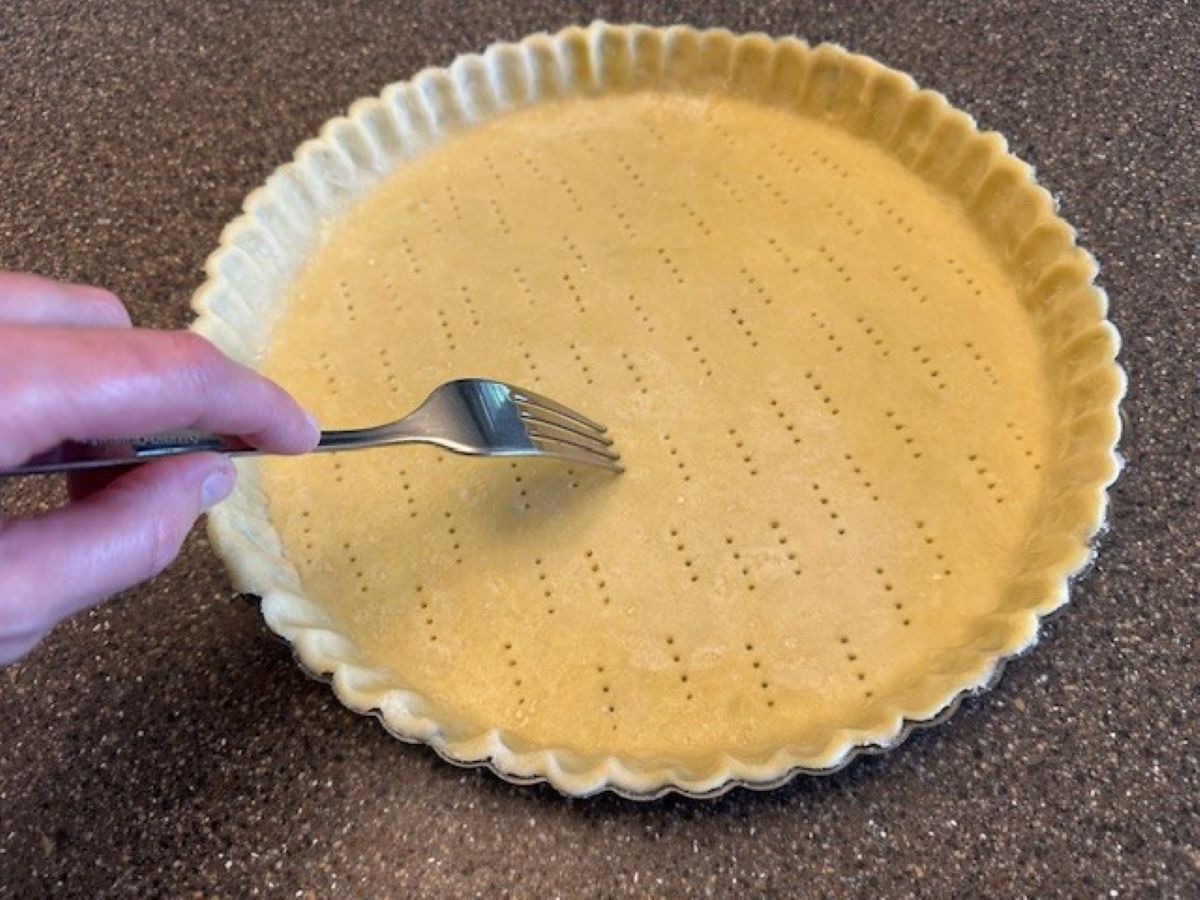
Pate Brisee (Simple Pie Dough)
Equipment
- 1 11" Round Tart Pan with a removable bottom or a large pie plate
- Food Processor
- Fork
- Pastry Blender optional
- Parchment Paper
- Plastic Wrap
- Baking Pie Weights or dry beans
- Aluminum Foil if not using pie weights or beans
Ingredients
- 8 oz. All Purpose Flour about 1-¾ C, measured by the spoon and sweet method, plus a little extra to dust your work surface
- 5 oz. Cold, Unsalted Butter, Cut into Cubes 10 Tablespoons
- 1 tsp. Kosher Salt
- 7-8 T. Ice Cold Water
Instructions
- Gather your ingredients, along with a food processor, and have a piece of parchment paper available. Stir the salt into the flour.
- Gently toss the butter into the flour to coat each piece.If preparing the dough by hand, use clean hands, work directly in the bowl, massaging the butter with your fingers until you have pea-sized pieces. Drizzle in the water a few tablespoons at a time, working the mixture into a cohesive dough.Alternatively, if you have a pastry blender, you can cut the butter into the flour and work the ice water in until the dough comes together.
- If using the food processor, add the flour and butter mixture into the bowl, drizzle in the ice water, starting with only 6 or 7 Tablespoons.
- Pulse the mixture just until the dough comes together. It should look shaggy, and a little crumbly, but will hold its shape if pressed together. If the dough has absorbed all of the water and appears too dry, add in another tablespoon of the ice water, process again, and add the remaining tablespoon of water, only if needed. You do not want a wet dough.
- Regardless of your method, move the ball of dough onto a clean work surface and press into a round, disc shape. Place the disc onto the parchment paper, wrap tightly in plastic wrap, and stick in your refrigerator to rest for an hour.
- After allowing your dough to rest and the butter in the dough to firm, place the disc onto your clean work surface, lightly dusted with flour.You'll want to go ahead and preheat your oven to 350°F while you prepare your pie crust shell.
- Using a rolling pin, gently begin tapping down on the dough to loosen it up. This helps to ensure that your dough doesn't crack or break apart. Rotate the dough and repeat.
- Roll out the dough as thinly as you can, occasionally lightly dusting the surface of the dough with flour and rotating it so it doesn't stick to your work surface.
- Once the dough has been rolled to a round larger than your tart pan, ensuring that there is enough to line the bottom and up the sides, carefully fold the dough in half, and place over the tart pan. Press down gently to ensure that the dough is securely tucked into every crevice.
- Using your hands or the rolling pin pressed over the rim of the pan, trim the edges. Use your fingers to lightly press into the crimped sides. The dough will shrink slightly as it bakes, so be sure that the edges are just slightly higher than the rim.
- Use a fork to pierce small holes over the entire bottom of your pie crust shell. This step will help keep the dough from puffing up, as well as making sure that air gets beneath the bottom layer, ensuring an even bake.
- Line your shell with parchment paper, and fill the center with baking weights, if using. You can also use any dry beans. This step will also ensure that your dough remains thin and flaky, without puffing. Alternatively, if neither of these are an option, you can press a sheet of aluminum foil down over the parchment, just be sure to press lightly into the sides of the tart pan.
- "Blind Bake" your pie crust shell in the preheated oven for about 5 minutes. Remove the parchment with the filling, return the pan to the oven for another 10 minutes, just until the crust is a pale golden brown.You're now ready to fill and bake!






